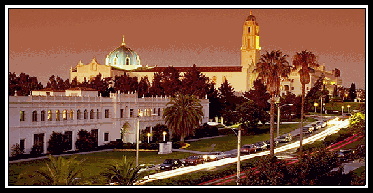
URBAN ECONOMICS
 |
| Spring 2003 |
 |
Economics 104 URBAN ECONOMICS |
|
|
|
| | HOME | SYLLABUS | CALENDAR | ASSIGNMENTS | ABOUT PROF. GIN | |
Study Guide I 1. How do trading cities develop? 2. How do industrial cities develop? 3. Show graphically how innovations such as interchangeable parts, the assembly line, and inventions in specific industries affected the market area served by factories. How did this in turn affect the size of factories and urban areas? 4. Show graphically how nnovations in intercity transportation such as canals and railroads affected the market area served by factories. How did this in turn affect the size of factories and urban areas? 5. How is the total transportation cost for a firm calculated? 6. How is the monetary weight calculated? 7. Under what conditions would firms be resource-oriented? Show graphically and mathematically why these types of firms locate where they do. 8. Under what conditions would firms be market-oriented? Show graphically and mathematically why these types of firms locate where they do. 9. Why don't firms locate in intermediate locations? 10. What is the principle of median location? Explain how this is used to determine the local of firms in the case of multiple markets, large cities, and transshipment points. 11. What are local inputs? 12. How did energy as a local input affect the location of cities? 13. Show graphically the tradeoff between transport costs and local input cost (for example, labor) when firms had a transfer orientation. 14. Show graphically the tradeoff between transport costs and local input cost (for example, labor) when firms have an input orientation. 15. What factors cause firms to become input oriented instead of transfer oriented? 16. How do natural amenities, learning possibilities, and unions affect labor and hence economic activity? 17. How do local public services and taxes affect firms' location decisions? 18. What are localization economies, and how do they lead to the development and/or expansion of cities? 19. Why do variations in demand and different labor needs make it desirable for firms to cluster? 20. What are urbanization economies, and how do they lead to the development and/or expansion of cities? 21. What is the incubation process and the Product Cycle Theory? 22. What are agglomerative economies in marketing (shopping externalities), and how do they lead to the development and/or expansion of cities? 23. How is a firm's market area determined, both graphically and algebraically? 24. How do economies of scale, travel costs, per capita demand, population density, and income affect a firm's market area? 25. How do economies of scale and travel costs affect a firm's market area when the law of demand in taken into account? 26. How does the relationship between scale economies and per capita demand affect the size and number of firms? 27. How does central place theory explain the development of cities? 28. What are the implications of central place theory in terms of the number and size of cities, as well the shopping paths that are taken by consumers? 29. How does the existence of scale economies, imperfect substitutes, and complements affect the hierarchical pattern of cities? 30. How does variation in demand and the existence of resource-oriented firms and local input-oriented firms affect the hierarchical pattern of cities? |